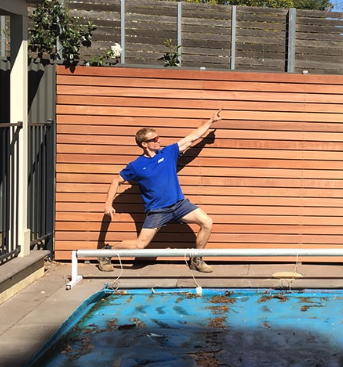How to Install A Standard Colorbond Fencing Panel
Posted by Lee Benson on 24th Dec 2024
Along with the video above, we’ll outline how to install a standard 1.8-metre-tall Colorbond fencing panel. Colorbond steel is a beautiful product and all Australian-made. Thanks to the durability and hardwearing surface of Colorbond steel, Colorbond fence panels make for ideal low maintenance fence styles that are suitable to all budgets and built to withstand whatever the weather throws its way.
One fencing panel comes with two rails, the top and bottom, three fencing sheets and two channel posts that sit into the ground and some screws. Take it all out of the packaging, and follow the seven steps on how to install Colorbond fence panels below.
Step 1: Position the fence poles, using a string line to mark out the bottom rail
- To get started, position out the fence by placing a peg at either end and run a string line going from one end to the other, which you’ll need to level out.
- Set the bottom string line as the bottom of your fence, which is where the bottom rail will sit, and make sure it is parallel to the driveway or ground perimeter. This should be essentially at ground level for effective full privacy fencing.
- Set out the width of your panels for the positioning of your poles, using the rail to determine the width between the poles. Mark the distance either on the string line or on the ground with a bit of paint or pen or even just mark the dirt.
- Next, get your second rail and lay it down next to it, giving yourself about a 10mm gap spacing between the two rails. If you’ve got a long run of fence, continue this pattern to map out your fence line.
Step 2: With the fence posts marked out, dig the holes
- Once you have the holes marked out, start digging 150 to 200 mm wide and 600 mm deep holes for a 1.8-meter-high fence. If you're installing a taller fence, go a bit deeper.
- Next, lay out your posts on the ground next to their holes. For the intermediary C-channel posts, screw them together back to back, using a tek gun and the tek screws provided in the Colorbond kit.
Step 3: Mark the posts for the height of the fence
- If you’re installing a 1.8m tall fence, measure and mark 1.8m on all of the posts. This black mark should line up with the string line in order to get a nice and level fence for professional and functional landscaping.
Step 4: Pour the concrete and insert the poles into place
- It’s time to pour the concrete into the holes. Only fill the holes about halfway, planning for displacement when the poles are inserted. We used a rapid-set concrete so that the concrete would dry fast, but you don’t have to, and we would encourage against rapid-set if it’s your first time installing a fence.
- When you’ve poured the concrete into the hole, place the channel pole into the hole and use a leveller to help it dry straight.
- While your posts are drying in the concrete, get your bottom rail and place it into position along the string line.
- Once the rail is laid down, concrete the intermediary hole and place the pole in, letting the weight fall to level itself and using a leveller, again making sure the mark is in line with the string line.
Step 5: Insert and screw the rails into place
- Give the concrete some time to dry around the posts, and then, when the concrete is partially dry, it's time to insert the bottom rail between the two posts. Insert the rail into one post and slide the other end of the rail down the inside of the opposite post. Lower the rail until you reach the mark on the posts to get it level.
- Next, get the tek gun andtek screws and screw the rail into place against the posts.
- Place the top rail on top of the posts, but don’t screw them in yet—you’ll need to pull it up again to secure the sheets into place.
Step 6: Install the sheeting and screw the top rail in
- Start by leaning the three sheets against one of the posts so they're easy to access.
- Place the first sheet as close to the rail as possible, inserting it at an angle. Make sure the sheet is positioned so that the lip on the edge of the sheet is towards the back and can be covered by the next sheet.
- Place the second and third sheets next to the first.
- Lift up the top rail and place it down with the top edge of the sheet inside the rail’s groove, securing the sheets in place.
- Finally, screw the top rail into the posts to secure the fence panel. And just like that, you have a beautiful, strong fence panel.
Step 7: Enjoy your beautiful and durable fence
Colorbond is made to last—it’s resistant to extreme weather, including fire, making it one of the best fence designs for hot weather conditions. You might notice it during the installation—these materials are tough. Thankfully, they are also relatively easy to install. The hardest part in the process is getting the concrete right, ensuring you have the right mix, and then levelling the posts correctly. Once you start mastering the art of the Colorbond fence installation, you’ll have the power to place these fences anywhere you like. And with so many fantastic Colorbond colours to choose from, it really is a powerful skill to know.
Please don't hesitate to get in touch if you’d like any further information about how to install a standard Colorbond fencing panel or for information about purchasing the right Colorbond fencing.


